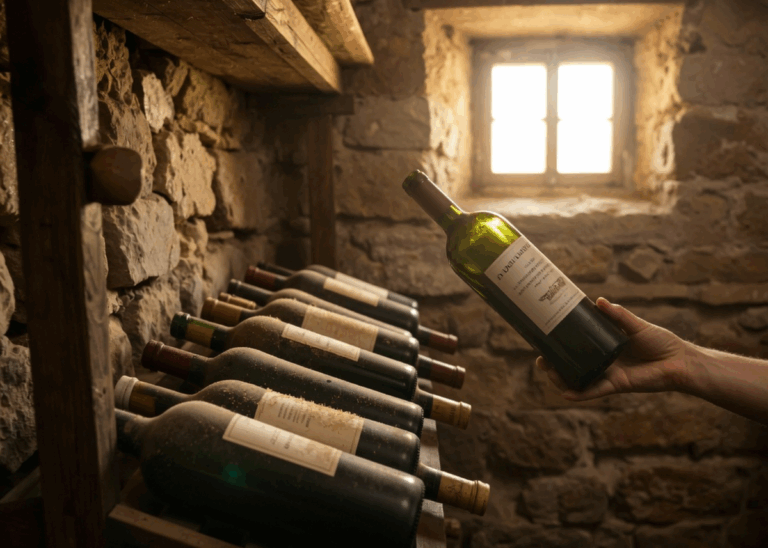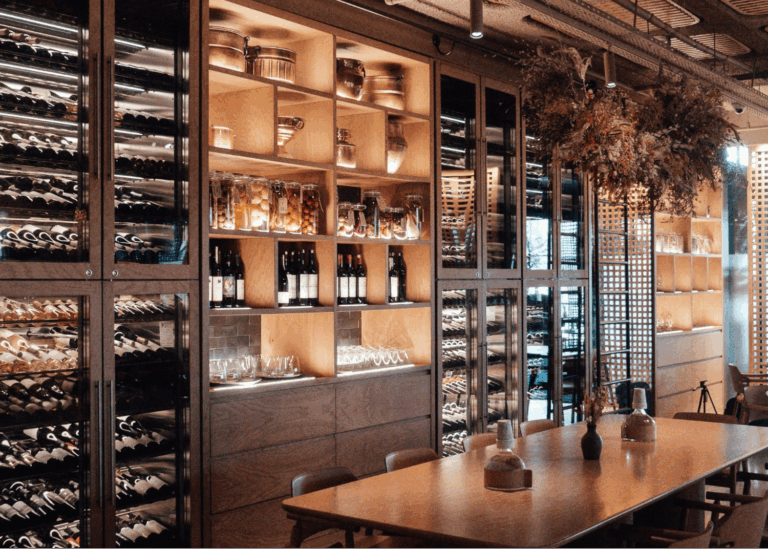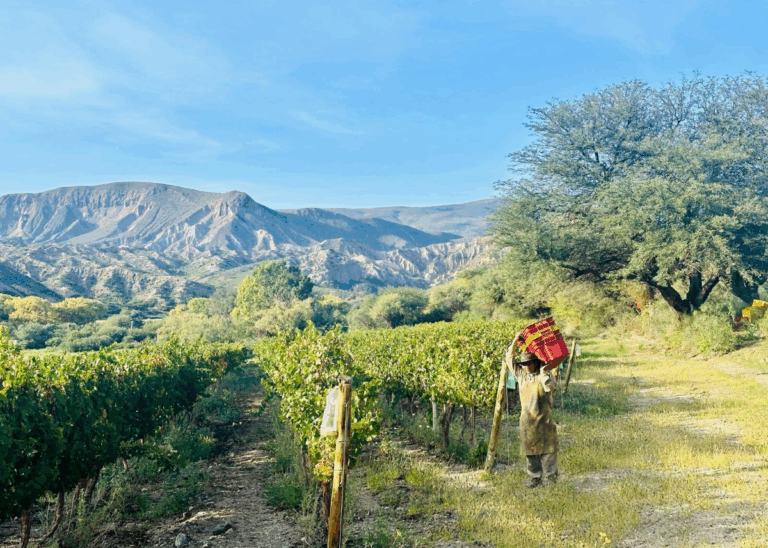[et_pb_section fb_built=”1″ _builder_version=”4.11.1″ _module_preset=”default” global_colors_info=”{}”][et_pb_row _builder_version=”4.11.1″ _module_preset=”default” global_colors_info=”{}”][et_pb_column type=”4_4″ _builder_version=”4.11.1″ _module_preset=”default” global_colors_info=”{}”][et_pb_text _builder_version=”4.11.1″ _module_preset=”default” global_colors_info=”{}”]
Contents:
- Sparklers of the Fall
- The “Sixth Sense” of Wine Tasting with Julien Miquel
- What Is Cava?
- How Is Cava Made?
[/et_pb_text][et_pb_text _builder_version=”4.11.1″ _module_preset=”default” global_colors_info=”{}”]
Sparklers of the Fall
If the fall of 2020 was all about pinot noirs, the fall of 2022 has been heavy on the sparklers.
Perhaps it’s all the Chinese food we’ve been eating.
There is no better combination for spicy Sichuan pepper, eaten on a dark, chilly evening, than a lively, sparkling wine.
We’ve enjoyed French créments de Loire… d’Alsace… de Bourgogne… de Limoux… (crément is the term for a French sparkling wine that isn’t Champagne).
We’ve opened a few bottles of Champagne, and prosecco (one of which, sadly, was so underbubbly and overflowery we declined a second glass).
But the bottle that most delighted us – golden color, fine bubbles, a bit of fruit and brioche, generous – was a humble cava.
Cavas tend to get put on the bottom of the sparkling wine hierarchy, a state of affairs that might have us outraged… if it didn’t make the prices work so well in our favor.
More on that in a moment. But first… How many senses do you use for wine tasting?
This week, resident expert Julien Miquel delves into the realm of the senses… explaining the distinctions between tastes, aromas, and flavors… plus his theory on the secret “sixth sense” of wine tasting… Do you agree with him? Or is there another sense out there…
[/et_pb_text][et_pb_video src=”https://www.youtube.com/watch?v=Qadh3-8qJN8&feature=youtu.be&themeRefresh=1″ module_id=”video” _builder_version=”4.11.1″ _module_preset=”default” width=”75%” width_tablet=”85%” width_phone=”100%” width_last_edited=”on|phone” module_alignment=”center” global_colors_info=”{}”][/et_pb_video][et_pb_text _builder_version=”4.11.1″ _module_preset=”default” global_colors_info=”{}”]
Sparklers of the Fall (Continued)
What Is Cava?
Cava has a reputation for being cheap. And certainly much cava is cheap, both in quality and cost. At the same time, a great cava can equal, if not surpass, the best of champagnes, at a fraction of the price.
In case you aren’t too familiar, cava is Spain’s flagship sparkling wine. While most cava comes from Spain’s east coast in Catalonia around Penedès, the designation is not limited, as is Champagne, to a single region. There are six cava production regions, which means that not only is there a ton of cava on the market, but also that quality and style are mixed. Thus, the €2 bottle from the little shop outside Madrid’s Retiro park that gave you that awful headache.
Cava’s creators in the late 19th century had loftier ideas for what the wine could be. The story goes that in the 1860s a Spanish winemaker from Penedès was traveling through Europe selling his wines when he came across Champagne for the first time. He had an aha moment and returned home to Spain where, using equipment imported from Champagne, he created the region’s first sparkling wine in 1972 from three local grapes: macabeo, parellada, and xarel-lo.
The vintage was good enough to convince local winemakers that they were onto something with this new champán, as they called it. Shortly thereafter they agreed to convert all white wine making in the Penedès region to the style. Later on, seeking to establish their bubbly as distinct from Champagne, they renamed it cava, from the Catalan word for cellar (a nod to the many months each cava must spend underground before release).
The new name notwithstanding, cavas are still, in essence, Champagnes of a lower latitude (especially true now that chardonnay has become common). Each cava is made in the traditional Champagne method.
How Is Cava Made?
Fair warning: our writing skills fall short of the precision needed to accurately describe the complex Champagne and cava method. The keys are a fastidious care in handling the grapes, an ability to predict the future, and a quick wrist.
The harvest should happen by hand, with utmost care to ensure that the skins don’t break and leak tannin. Crushing ideally happens on site to minimize jostling during transport. The harvesters keep each lot of grapes separate and the winemaker makes each lot into a separate wine. The result is scores or even hundreds of different “base” wines, each from a different plot of grapes. Here’s where a touch of clairvoyance comes in handy. After making the base wines, the winemaker must decide how they are blended. It’s a decision that can only be based on experience and a long memory. He will not have occasion to taste the finished product until it has fermented a second time (to produce the bubbles) and rested on its lees (the sediment from the dead yeast) for many months, potentially years.
After the secondary fermentation in bottle, the wine sits in a cellar for at least 9 months on its lees, that is, in contact with the sediment from the dead yeast. The lees give it that extra depth of aroma and flavor. They also make the wine cloudy, so eventually it is necessary to remove them. In a process called remuage, a remueur gradually rotates and tips the bottle, little-by-little, one careful flick of the wrist at a time, over 4 to 6 weeks, concentrating the sediment in the neck. The neck is then either frozen in liquid nitrogen and opened to let a sediment plug shoot out, or, if done a la volée, held upside down, opened to let out a burst of foam and sediment, then quickly put right-side up. As you can imagine, it’s finicky. Heavier sediment is easy enough to concentrate in the neck. Lighter sediment likes to stay suspended in the wine, and failure to get it out results in a slightly cloudy bottle that the French call bleu.
Much cava is still made with the traditional three grapes – macabeo (for body), parellada (for crisp, apply notes), and xarel-lo (acidity and earth) – though various northerners and other Spanish indigenous grapes have begun to sneak in. Chardonnay is probably the most widely adopted newcomer, often replacing xarel-lo in the three grape blend, though grenache and even pinot noir (for rosadas) are popular as well. The indigenous monastrell, one of the very first grapes to be cultivated in Valencia, retains a loyal following as well, though only for rosadas.
Parellada often acts as the drum major, determining the freshness and high notes of a vintage. Like everything cava, however, it is also a grape to be cultivated with great care. A parellada plot is best lean and mean, and must be picked at just the right moment. If allowed to overproduce or overripen, the grapes lose the crispness that makes a great cava (or Champagne).
“Time is to cava what fire is to cooking,” says Catalonian winemaker Montserrat Mascaró. His Mascaró Cava Gran Reserva (featured in our upcoming Ancient Wines Collection) is an example of what a high grade cava can be. Mascaró approaches winemaking with an almost alchemical mindset that combines the precision of a scientist with the mystical respect of the natural world. His vineyard, Mas Miquel, inhabits the ruins of a Cistercian monastery (the religious order that held onto Europe’s winemaking knowhow at the fall of the Roman Empire) and is surrounded by forest (which acts as a heat sink, driving down temperatures to more Champagne-like levels). There is a memory and wisdom in these old grounds, something Mascaró listens for each season, carefully watching the local bees and butterflies, the color and shape of the leaves on the nearby trees, how sap flows from each vine, and other natural cues, before pruning or harvesting (both by hand).
Like every great winemaker we know, Mascaró declines any credit for his wines (the Gran Reserva is a multiple award and 90+ point score winner). “We are simply spectators of the great show nature puts on at Mas Miquel every year,” he says.
Until next time,
The Wine Explorer
[/et_pb_text][/et_pb_column][/et_pb_row][/et_pb_section]



